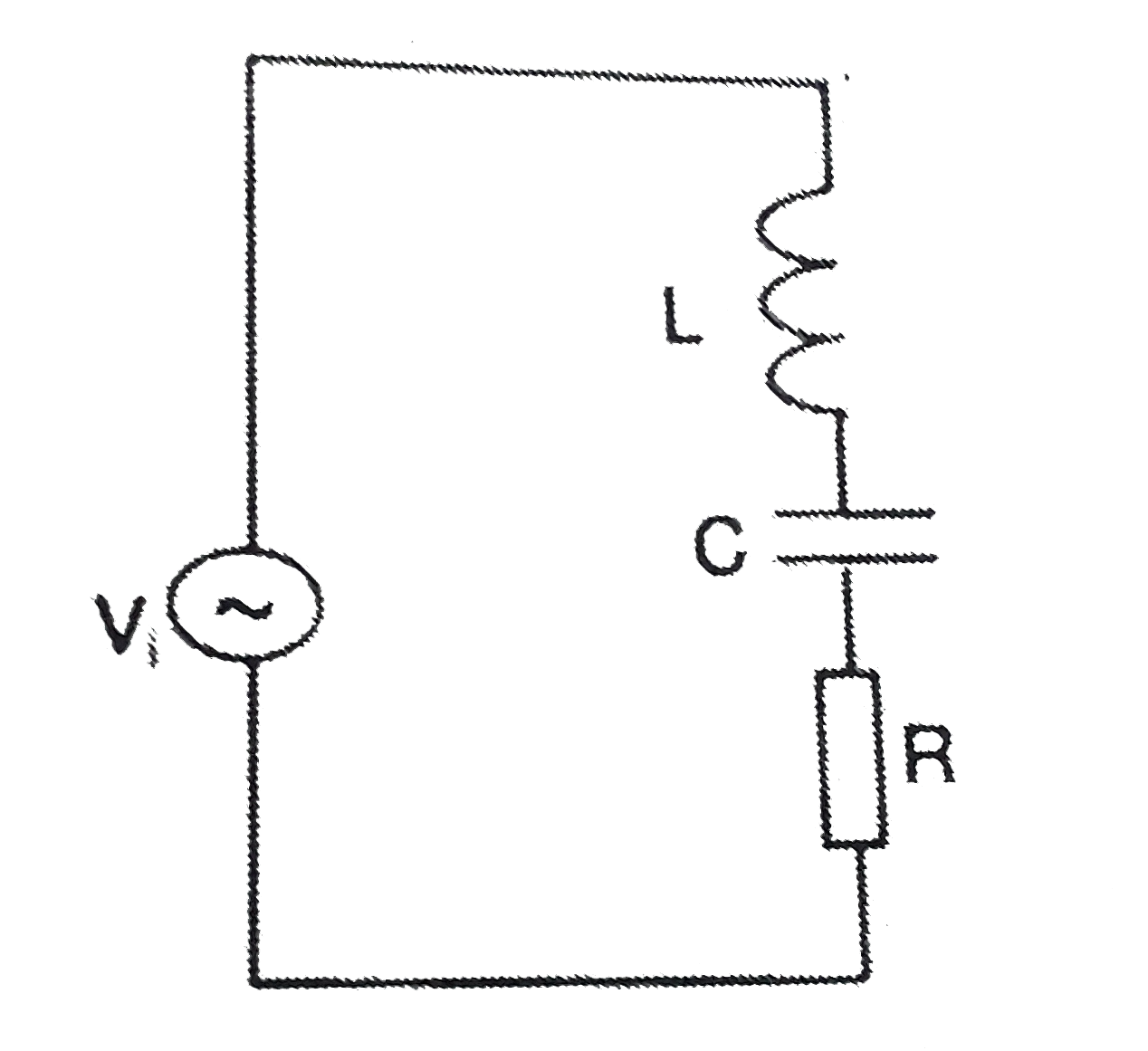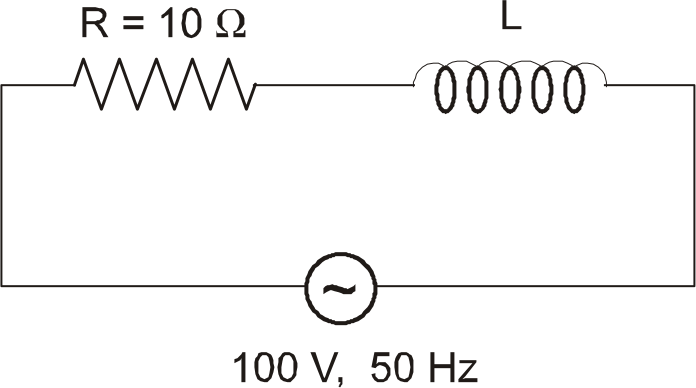When an alternating voltage of is applied across a device , a current of flows through the circuit and it leads the applied voltage by a angle radian. When the same voltage source is connected across another device , the same current is observed in the circuit but in phase with the applied voltage. What is the current when the same source is connected across a series combination of and ?
1/4 A lagging in phase by /4 with voltage
1/4 A leading in phase by /4 with voltage
A leading in phase by /4 with voltage
A leading in phase by /6 with voltage
The correct Answer is:B
To solve the problem step by step, we will analyze the two devices, P and Q, and then find the current when they are connected in series.
Step 1: Analyze Device P
- Given:
- Voltage (V) = 220 V
- Current (I) = 0.25 A
- Phase angle (φ) = π/2 radians (current leads voltage)
Since the current leads the voltage by π/2, device P behaves like a capacitor. The reactance (Xc) can be calculated using:
Xc=VI=220V0.25A=880Ω
Step 2: Analyze Device Q
- Given:
- The same voltage (V) = 220 V
- The same current (I) = 0.25 A
- Phase angle (φ) = 0 radians (current is in phase with voltage)
Since the current is in phase with the voltage, device Q behaves like a resistor. The resistance (R) can be calculated using:
R=VI=220V0.25A=880Ω
Step 3: Combine Devices P and Q in Series
When devices P and Q are connected in series, the total impedance (Z) of the circuit can be calculated using the formula:
Z=√R2+X2c
Substituting the values we found:
Z=√(880Ω)2+(880Ω)2=√2×(880Ω)2=880√2Ω
Step 4: Calculate the Total Current in the Series Circuit
Using Ohm's law, the total current (I_total) in the series circuit can be calculated as:
Itotal=VZ=220V880√2Ω
Simplifying this:
Itotal=220880√2=14√2A
Step 5: Determine the Phase Angle
To find the phase angle (φ) of the total current with respect to the voltage, we can use:
tanϕ=XcR=880Ω880Ω=1
Thus, φ = 45 degrees (or π/4 radians), indicating that the current leads the voltage.
Final Answer
The current when the same source is connected across a series combination of devices P and Q is:
Itotal=14√2A(leading the voltage by π4 radians)
- Given:
- Voltage (V) = 220 V
- Current (I) = 0.25 A
- Phase angle (φ) = π/2 radians (current leads voltage)
Xc=VI=220V0.25A=880Ω
- Given:
- The same voltage (V) = 220 V
- The same current (I) = 0.25 A
- Phase angle (φ) = 0 radians (current is in phase with voltage)
R=VI=220V0.25A=880Ω
When devices P and Q are connected in series, the total impedance (Z) of the circuit can be calculated using the formula:
Z=√R2+X2c
Substituting the values we found:
Z=√(880Ω)2+(880Ω)2=√2×(880Ω)2=880√2Ω
Using Ohm's law, the total current (I_total) in the series circuit can be calculated as:
Itotal=VZ=220V880√2Ω
Simplifying this:
Itotal=220880√2=14√2A
To find the phase angle (φ) of the total current with respect to the voltage, we can use:
tanϕ=XcR=880Ω880Ω=1
Thus, φ = 45 degrees (or π/4 radians), indicating that the current leads the voltage.
The current when the same source is connected across a series combination of devices P and Q is:
Itotal=14√2A(leading the voltage by π4 radians)
Similar Questions
(a) Draw graphs showing the variations of inductive reactnace and capacitive reactance with frequency of the applied ac source .
(b) Draw the phasor diagram for a series RC circuit connected to an ac source.
(c ) An alternating voltage of 220 V is applied across a device X , a current of 0.25 A flows , which lag behind the applied voltage in phase by π2 radian . If the same voltage is applied across another device Y , the same current flows but now it is in phase with the applied voltage .
(i) Name the devices X and Y.
(ii) Calculate the current flowing in the circuit when the same voltage is applied across the series combination of X and Y.

View SolutionAn alternating voltage E=E0sinωt , is applied across a coil of inductor L. The current flowing through the circuit at any instant is
View Solution
Knowledge Check
When a voltage measuring device is connected to a.c. mains the meter shows the steady input voltage of 220V. This means
Ainput voltage cannot be ac voltage, but a dc voltage.Bmaximum input voltage is 220 VCthe meter reads voltage not V but <V2> and is calibrated to read √<V2>.Dthe pointer of the meter is stuck by some mechanical defect.
In the following circuit the current is in phase with the applied voltage. Therefore, the current in the circuit and the frequency of the source voltage respectively, are

View SolutionWhen 100 V dc is applied across a coil, a current of 1A flows through it and when 100 V ac of 50 Hz is applied to the same coil, only 0.5 flows
The inductance of coil is
View SolutionIn LR circuit (shown in figure), current is lagging by π3 in phase with applied voltage, then select correct alternative:

View SolutionWhen a voltage measuring device is connected to a.c. mains the meter shows the steady input voltage of 220V. This means
View SolutionWhen a voltage measuring device is connected to a.c. mains the meter shows the steady input voltage of 220V. This means
View SolutionAn LCR circuit is connected to a source of alternating current. At resonance, the applied voltage and the current flowing through the circuit will have a phase difference of
View SolutionA 6 V, 12 W lamp is connected in series with a resistor R and a source of voltage 12 V.
What is the current flowing through the circuit?
View Solution
